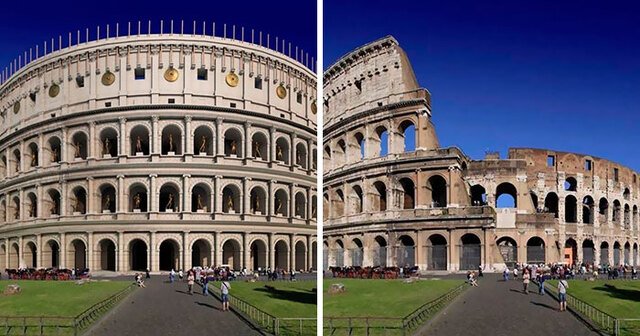
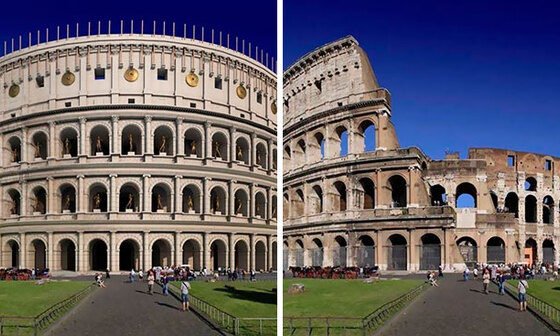
ARCHITECTURE
What These 11 Famous Ancient Roman Architecture Looked Like In The Past
Ancient Rome is one of the greatest empires to ever exist, is characterized by many Roman roads, arches, and aqueducts, built over 2,000 years ago, which are still functional and used to this day, also has unique ancient Roman architecture like temples, palaces, and amphitheaters that still survives to nowadays, leaving many architectural details that will leave you in awe and Inquiries!
Scientists now managed to reconstruct many of these beautiful landmarks, and that is based on historical records – Scroll down to see how some of the oldest Roman architecture looked in their time.
#1 Colosseum
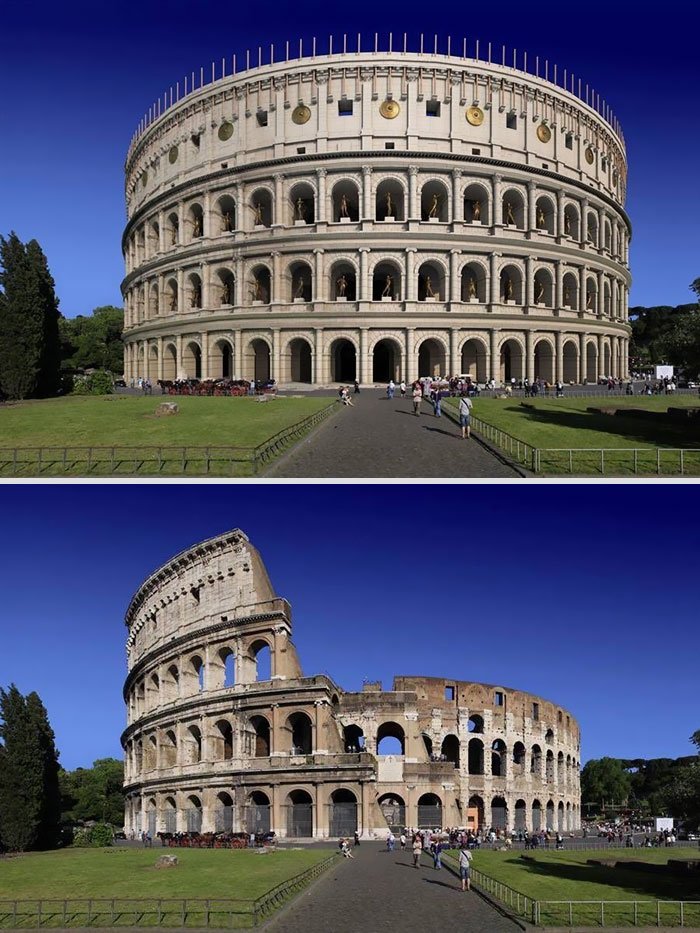
The Colosseum is the most famous ancient structure in Roma and around the world, It was built over 2000 years ago. The amphitheater was during its glory days offered a variety of entertainment like gladiator battles, executions, animal hunts, and dramas based on mythology also he used to hold up to 50,000 – 80,000 spectators. it still one of the most visited tourist attractions in Rome.
#2 Roman Forum
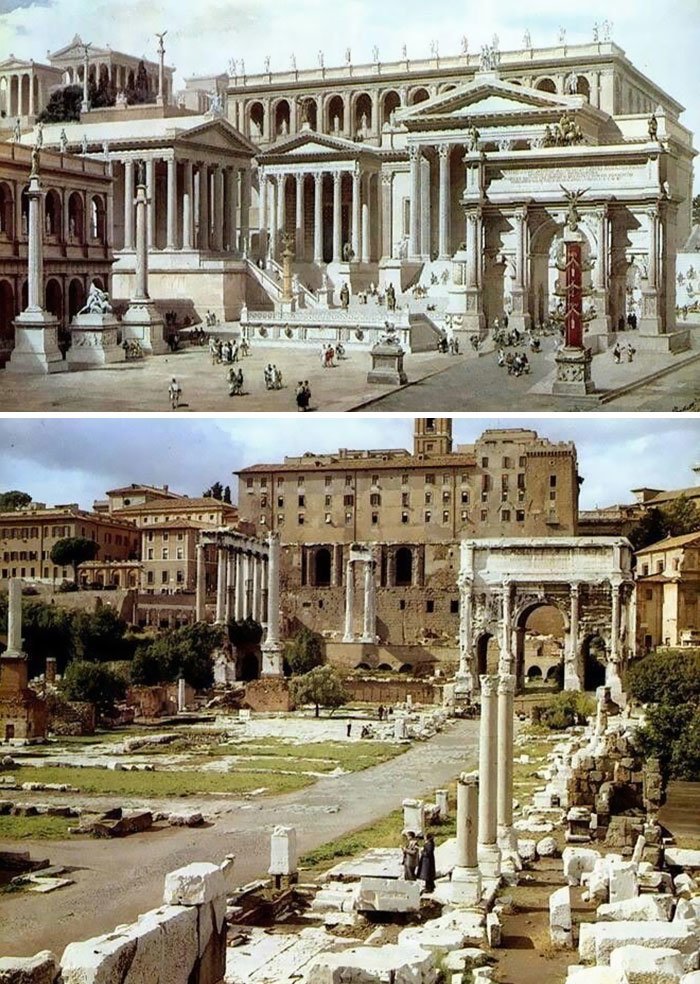
The Roman Forum was built in AD 203 and was surrounded by some of the most important ancient government buildings, but only ruins of those buildings survive to this day, it is located at the heart of the city of Rome. The site was the venue for public speeches, criminal trials, and gladiatorial matches as well as the commercial hub
#3 Circus Maximus
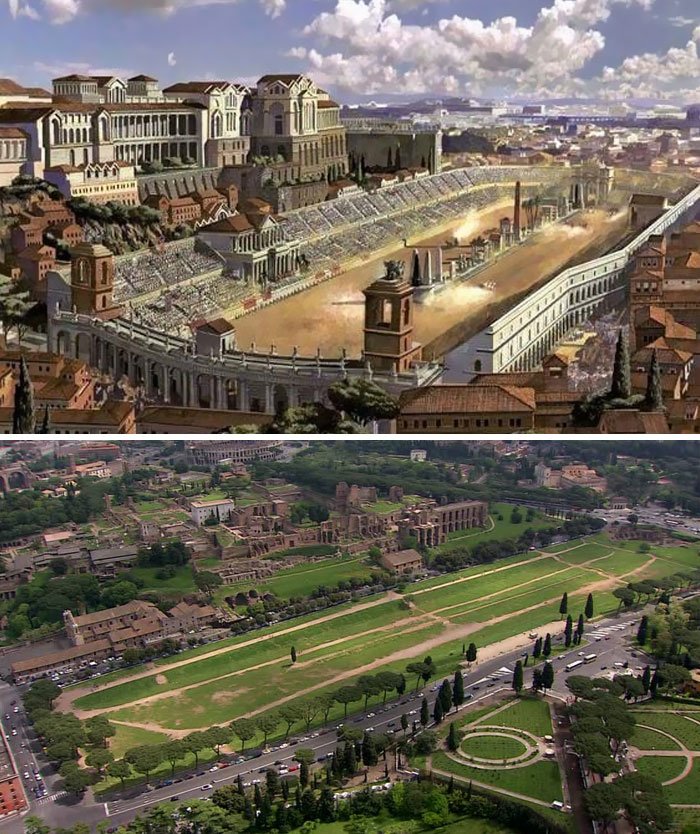
flickr/ Larry Koester
The Circus Maximus was the first and largest stadium in ancient Rome measuring 621 m (2,037 ft) in length and 118 m (387 ft) in width, it was used to be a chariot race, public games, and religious festivals. It could hold over 150,000 spectators. Circus Maximus in nowadays is a public park.
#4 Stadium of Domitian
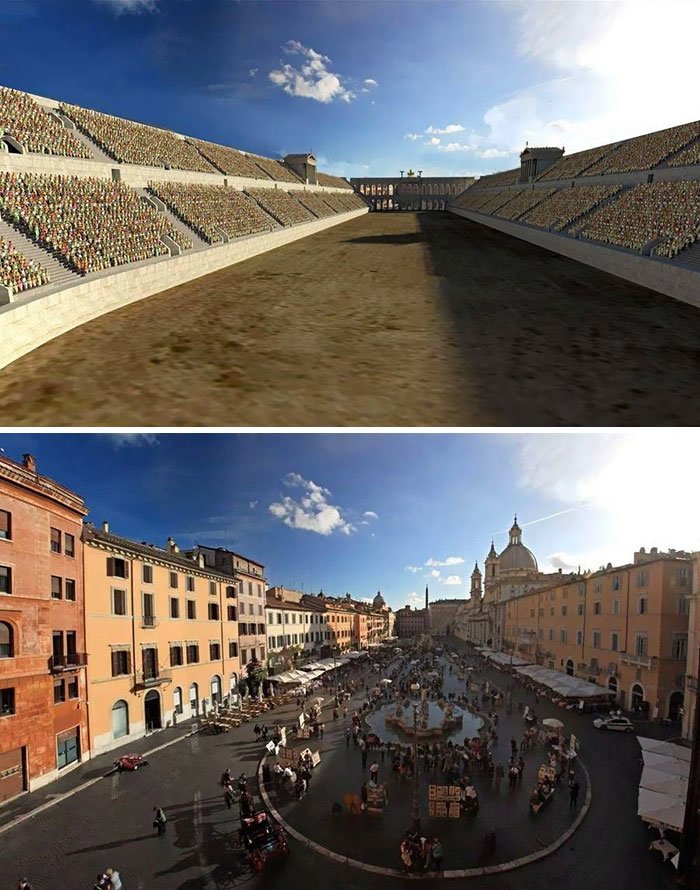
The Stadium of Domitian was built in AD 80 as a gift to the Roman people from emperor Titus Flavius Domitianus was mostly used for athletic contests. But when the Colosseum was under renovation after fire damage in AD 217, the gladiator battles were moved here. As the Empire’s power diminished, the Stadium was used to house the poor and after the Renaissance, the stadium was completely taken apart for building materials. Now Piazza Navona stands in place of the Stadium of Domitian.
#5 Temple Of Saturn
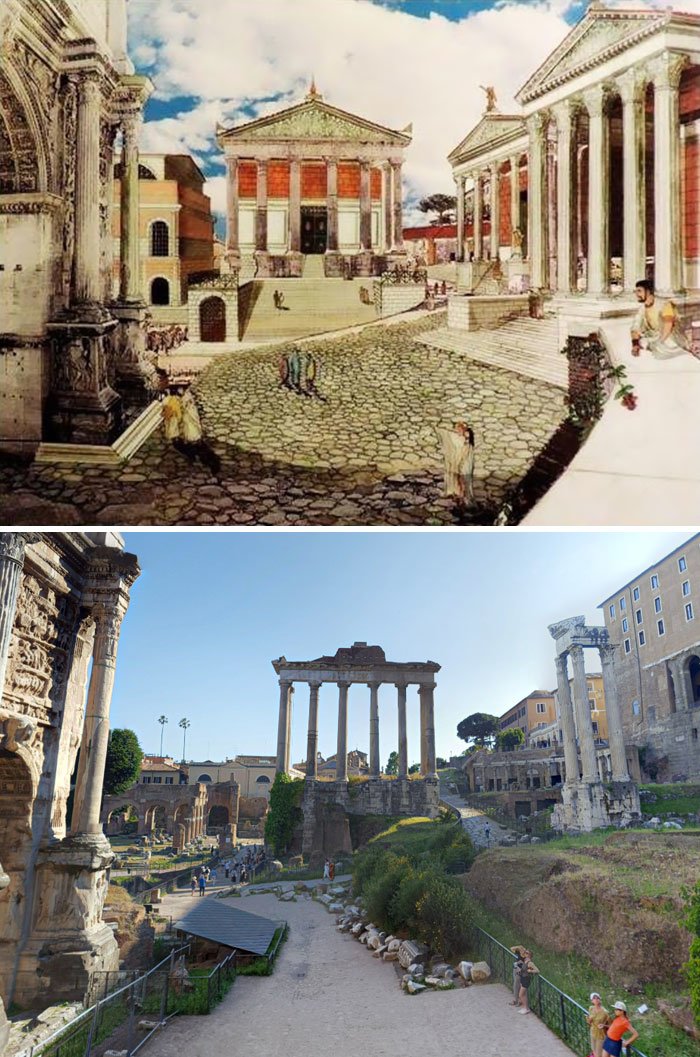
This temple dedicated to the god Saturn, it built-in 497 BC under Lucius Tarquinius Superbus, King of Rome. Throughout the years, the temple suffered many disasters, including fire, the temple was destroyed and rebuilt with the present ruins only reflecting the third incarnation of the Temple of Saturn. There an inscription lies on the partially preserved pediment: “The Senate and People of Rome restored [the temple] consumed by fire.”
#6 Mausoleum Of Hadrian (Castel Sant’Angelo)
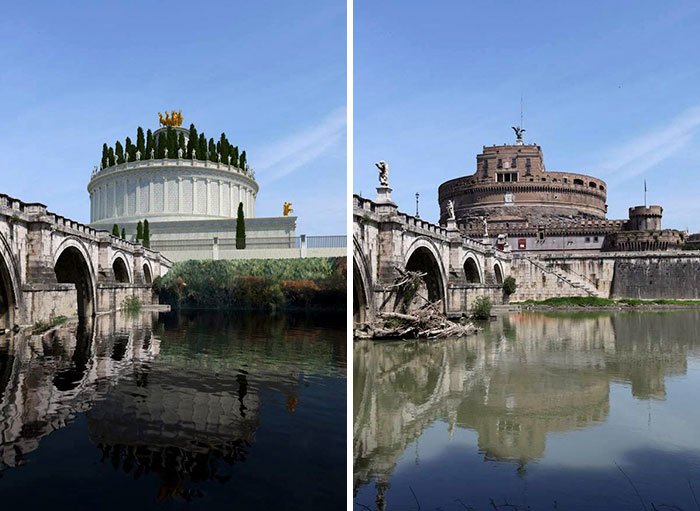
The Mausoleum of Hadrian, Located in Parco Adriano, known as Castel Sant’Angelo. It was built between AD 134 and 139 commissioned by Emperor Hadrian and was supposed to serve as a mausoleum to the emperor and his family. The emperor’s ashes were placed inside in AD 138 and the tradition of laying all emperor’s ashes to rest here was born. Also, it was after used by the Catholic church as a fortress and a castle. Nowadays, the Mausoleum of Hadrian is a museum.
#7 Temple Of Venus And Roma
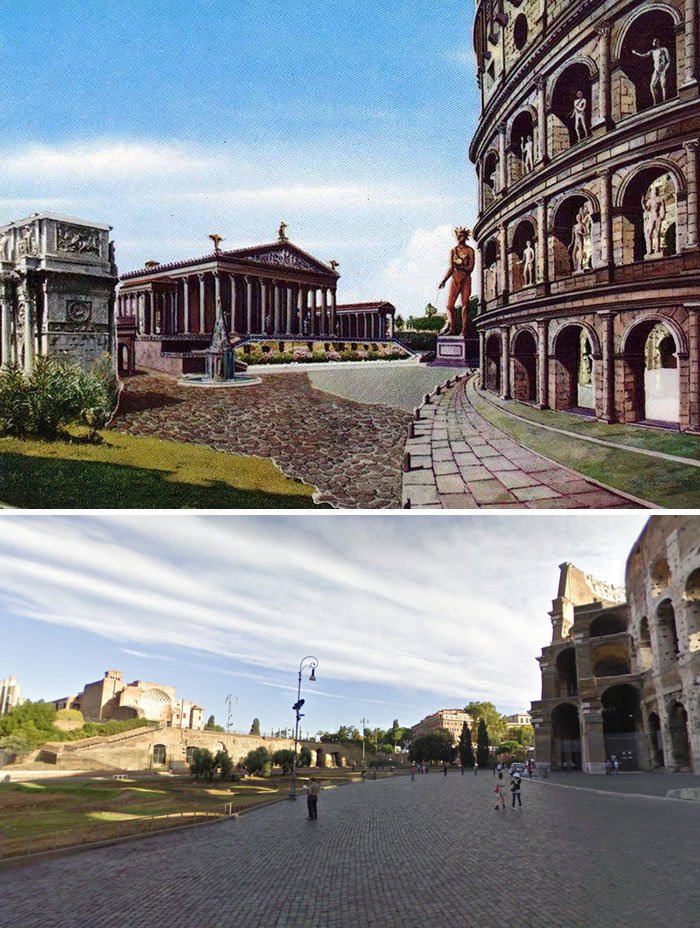
The Temple of Venus and Roma was built in AD 135, and many believe it was once the largest temple in Ancient Rome. The temple is located right next to the Colosseum on the Velian Hill and was dedicated to the goddesses Venus Felix (“Venus the Bringer of Good Fortune”) and Roma Aeterna (“Eternal Rome”). Historians believe that the temple was destroyed by an earthquake in the 9th century. Later, a church was built in its place, ordered by Pope Leo IV. Now we can see only a few columns of the former temple remain standing today.
#8 Roman Forum From The Tabularium
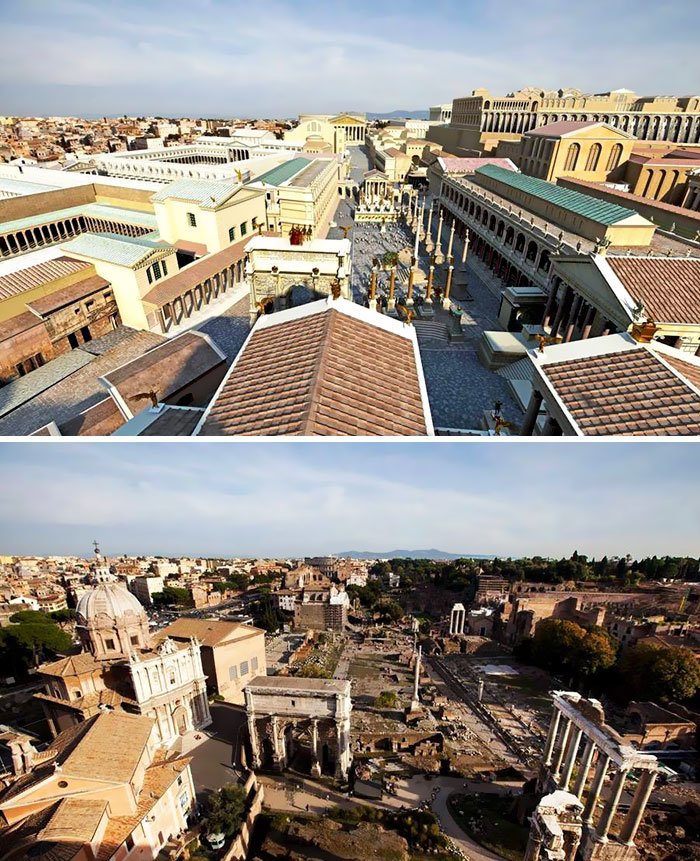
This Forum From The Tabularium was used to house the offices of many city officials of ancient Rome. It is one of the better-preserved architectural pieces even though built nearly 2,000 years ago, its great corridor of 67 m (220 ft) still remains partially intact.
#9 Theatre Of Marcellus, Temple Of Bellona And Temple Of Apollo Sosianus
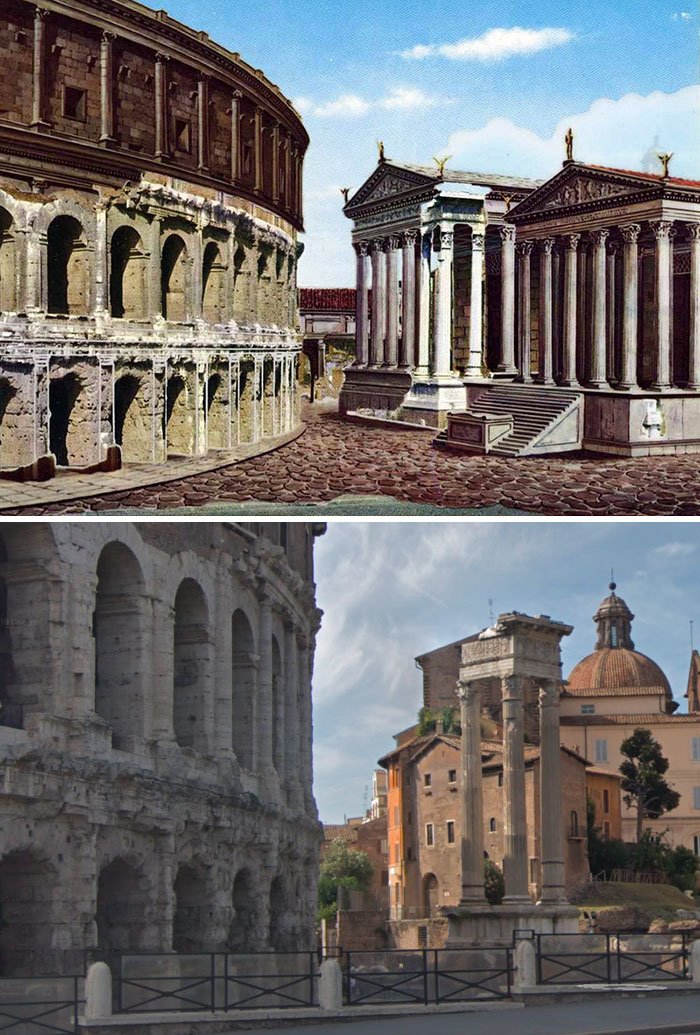
The Theatre of Marcellus was built in 13 BC and was the largest and most important theater in the empire and used for various performances, like drama and songs. Despite its changing use throughout history, the theater was a fortress during the Middle Ages. Some sections of the theatre remain intact to this day
#10 The Basilica Of Santi Cosma E Damiano
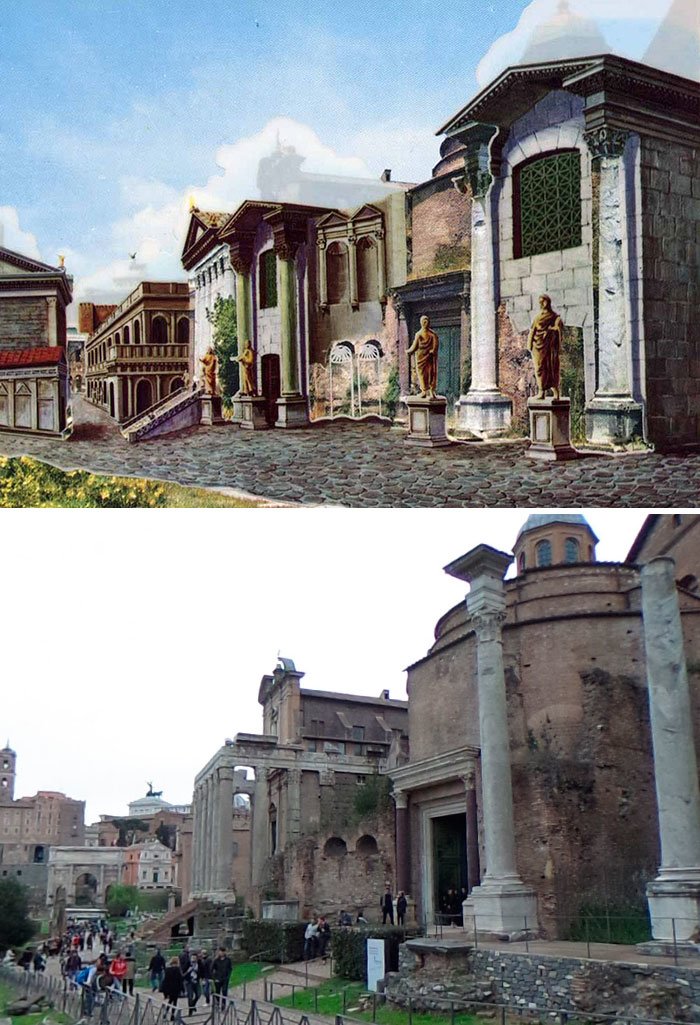
The Basilica of Santi Cosma e Damiano was commissioned by Emperor Maxentius in honor of his son Valerius Romulus, who died in 309. The building was Christianized and dedicated to Sancti Cosma et Damianus in 527. A large part of the structure remains intact to this day and is one of the more popular tourist attractions. Today this temple is a basilica in the Roman Forum.
#11 Temple Of Castor And Pollux And Temple Of Caesar
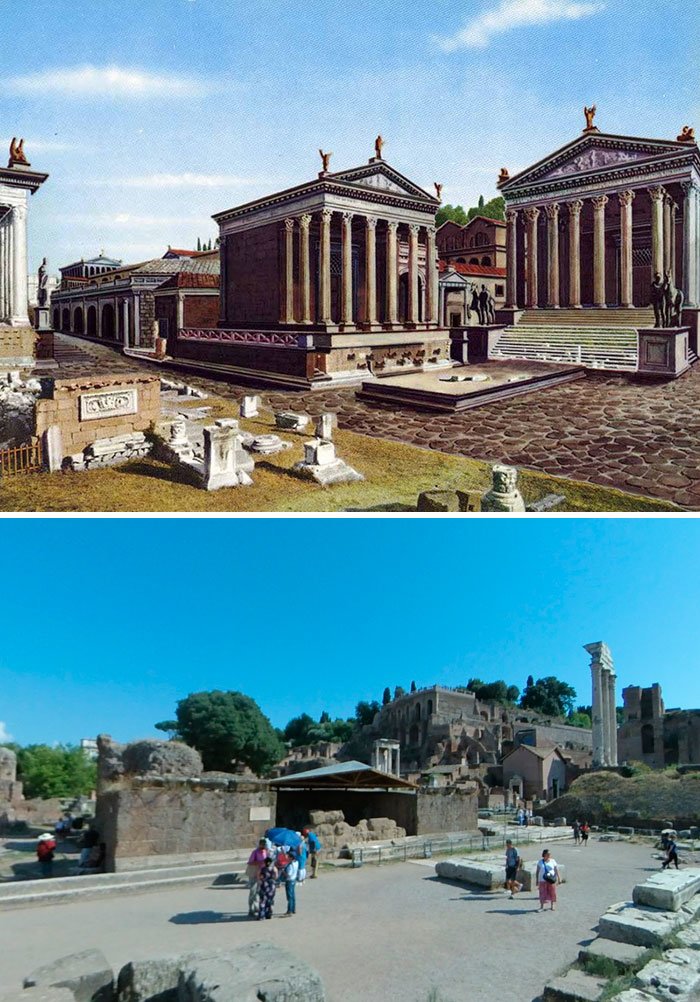
Built in 495 BC to commemorate the victory of the Battle of Lake Regillus, The Temple of Castor and Pollux originally served as the meeting place for the Roman Senate. According to a legend, the Dioscuri, the two mythological warrior brothers, appeared to help the army of the Roman Republic that day, to whom the temple was dedicated. Only a few columns and a few other fragments of the temple survived to this day. The Temple of Caesar, built in 29 BC, was dedicated to Julius Caesar, making him the first Roman resident to have a temple built in his honor.
-
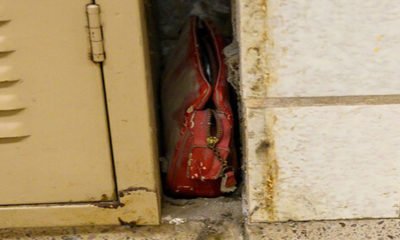
 Other4 years ago
Other4 years agoSchool Found A Purse That Was Lost Back In The ’50s And It’s Like A Time Capsule For People Of The Generation
-

 FUNNY4 years ago
FUNNY4 years agoQuarantine People Are Sharing Their Worst Bad Baking Attempts (30 Pics)
-

 LIFESTYLE4 years ago
LIFESTYLE4 years ago30 Times People Spotted Complete Jerks During The Coronavirus (Covid-19) Crisis
-

 CULTURE4 years ago
CULTURE4 years agoThis Is How Military Food Rations Look From Different Countries (14 Pics)
-

 Other4 years ago
Other4 years ago30+ Rare Pictures That Reveal The Unseen Side Of Things
-

 SCIENCE4 years ago
SCIENCE4 years ago30 People Who Stand Out To Their Unique Genetic
-
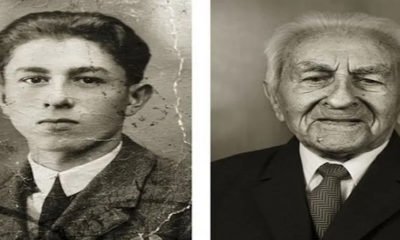
 ENTERTAINMENT5 years ago
ENTERTAINMENT5 years ago12 side-by-side portraits of people over 100 with their younger selves
-

 ENTERTAINMENT5 years ago
ENTERTAINMENT5 years ago40 Fascinating Photos Of Rarely Seen Things
